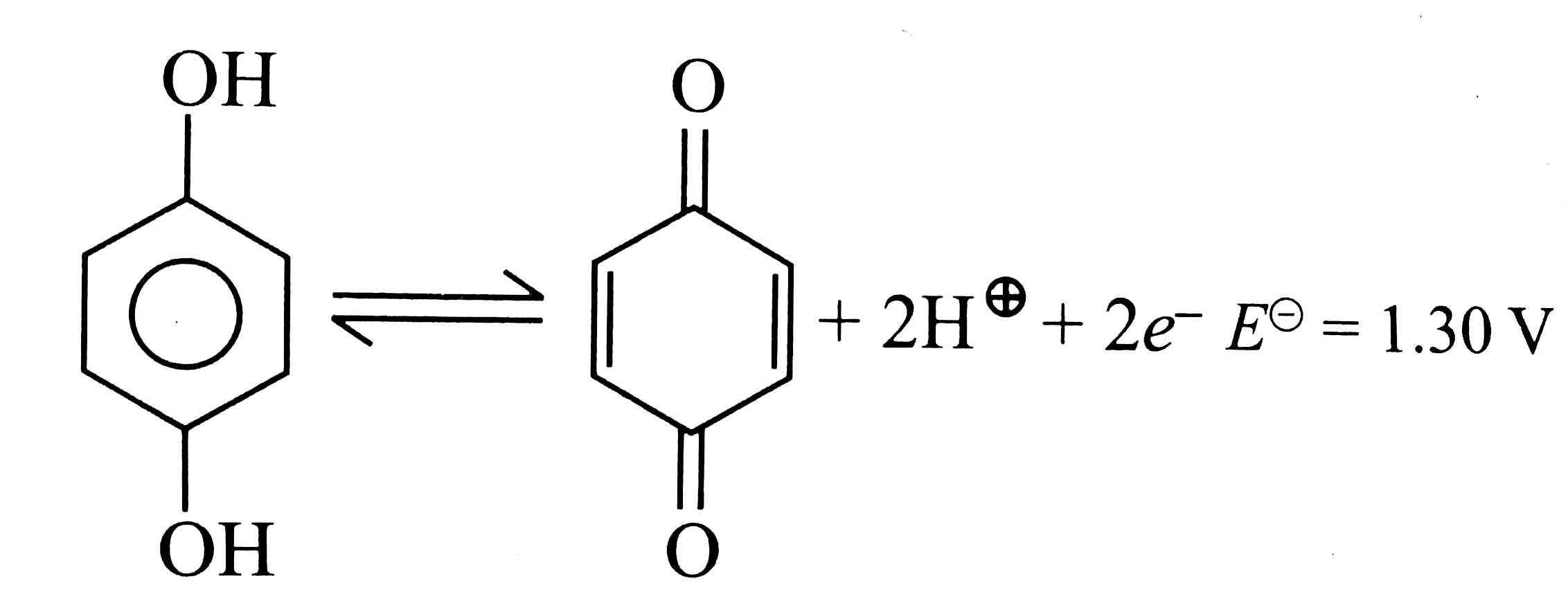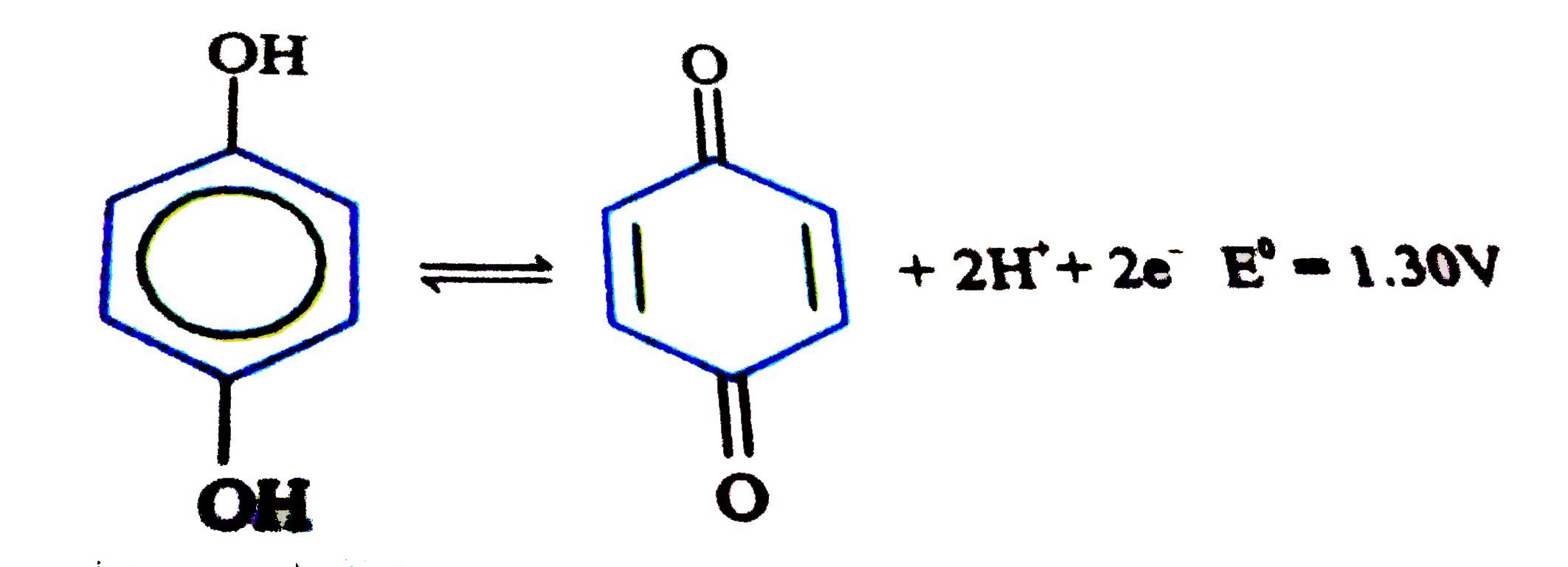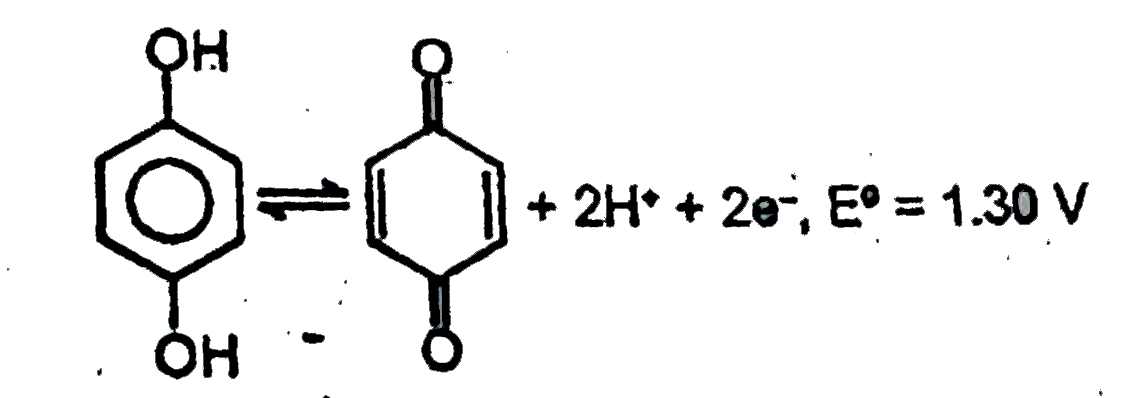Determine of pH: The following cell has a potential of 0.55V at 25∘C:
Pt(s)|H2(1¯)|H+(aq.?M)∣∣∣∣Cl−(1M)∣∣Hg2Cl2(s)∣∣Hg(l)
What is the pH of the solution in the anode compartment?
Strategy: First, read the shorthand notation to obtain the cell reaction. Then, calculate the half cell potential for the hydrogen electrode from the observed cell potential and the half cell poten-tial for the calomel reference electrode. Finally, apply the Nernst equation to find the pH.
The cell reaction is
H2(g)+Hg2Cl2(s)⇔2H+(aq.)+2Hg(l)+2Cl−(aq.)
and the potential is
Ecell=Eanode+Ecathode
Ecell=EH2/H++EHg2Cl2/Hg=0.55V
Because the reference electrode is the standard calomel electode, whic has E=E∘=0.28V, the half-cell potential for the hydrogn electode is 0.27V:
EH2/H+=Ecell−EHg2Cl2/Hg
=(0.55V)−(0.28V)
=0.27V
Applying the Nernst equation to the half-reaction
H2(g)→2H+(aq.)+2e−:
EH2/H+=E∘H2/H+−(0.0592Vn)log(C2H+PH2)
Substituting in the values of E,E∘, n and PH2 gives
0.27V=(0V)−(0.0592V2)log(C2H+1)
=(0.0592V)(pH)
Therefore, the pH is
pH=0.27V0.0592V=4.6
Topper's Solved these Questions
- ELECTROCHEMISTRYBOOK - R SHARMACHAPTER - ELECTROCHEMISTRYEXERCISE - Question Bank [Building the Knowledge Level I]
1 Videos
- ELECTROCHEMISTRYBOOK - R SHARMACHAPTER - ELECTROCHEMISTRYEXERCISE - Question Bank [Building the Knowledge Level 1]
2 Videos
- COORDINATION COMPOUNDSBOOK - R SHARMACHAPTER - COORDINATION COMPOUNDSEXERCISE - Archives
56 Videos
- GENERAL PRINCIPALS AND ISOLATION OF ELEMENTSBOOK - R SHARMACHAPTER - GENERAL PRINCIPALS AND ISOLATION OF ELEMENTSEXERCISE - Arechives
16 Videos
Similar Questions
The standard reaction potential of a calomel half cell is 0.28V at 25∘C. Calculate half cell potential when 0.1N KCl solution is used
View SolutionEMF of the following cell is 0.634 volt at 298 K. ltbr> Pt∣H92)(1atm)H+(aq)||KCl(1N)|Hg2Cl2(s)|Hg
Calculate pH of the anode compartment.
[Given: E∘Cl−|Hg2Cl2|Hg = 0.28 V and 2.303RtF=0.059]
View Solution
Knowledge Check
The half cell potential of a hydrogen electrode at pH = 10 will be
A-0.50 VB-0.59 VC0.059 VDnone of these.The half cell reduction potential of a hydrogen electrode at pH=5 will be :
A0.29VB−0.29VC0.059VD−0.059VThe half-cell reduction potential of a hydrogen electrode at pH=10 will be
A0.59VB−0.59VC0.059VD−0.059V
For the half cell

At pH=2, the electrode potential is
View SolutionThe half cell reduction potential of a hydrogen electrode at pH= 10 and H2 gas at 1 atmi will be
View SolutionThe cell Pt∣H2(g,01 bar) ∣∣H+(aq),pH=x∣∣∣∣Cl−(1M)∣∣Hg2Cl2|Hg|Pt has emf of 0.5755 V at 25∘C the SOP of calomel electrode is −0.28V then pH of the solution will be
View SolutionFor the half cell

At pH = 3 electrode potential is
View SolutionFor the half cell

At pH=2. Electrod potential is :
View Solution
